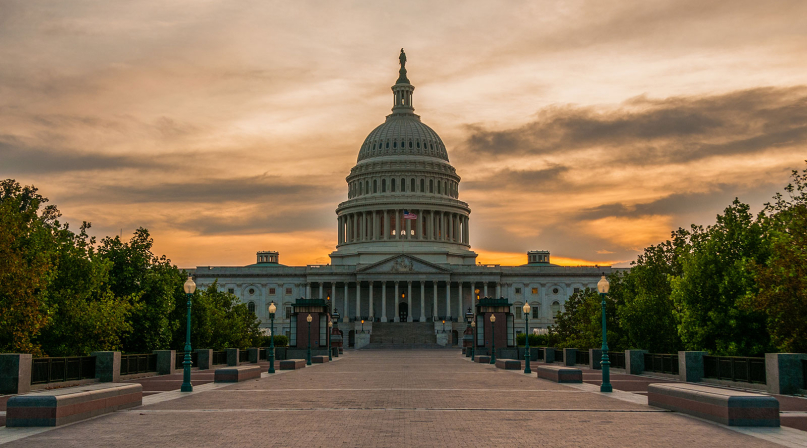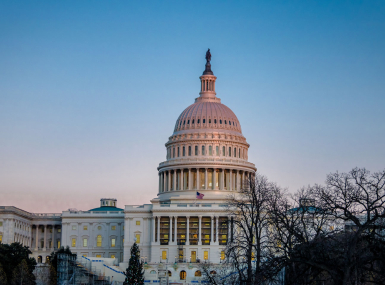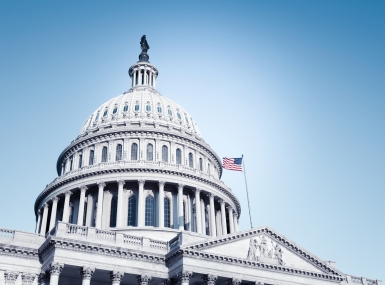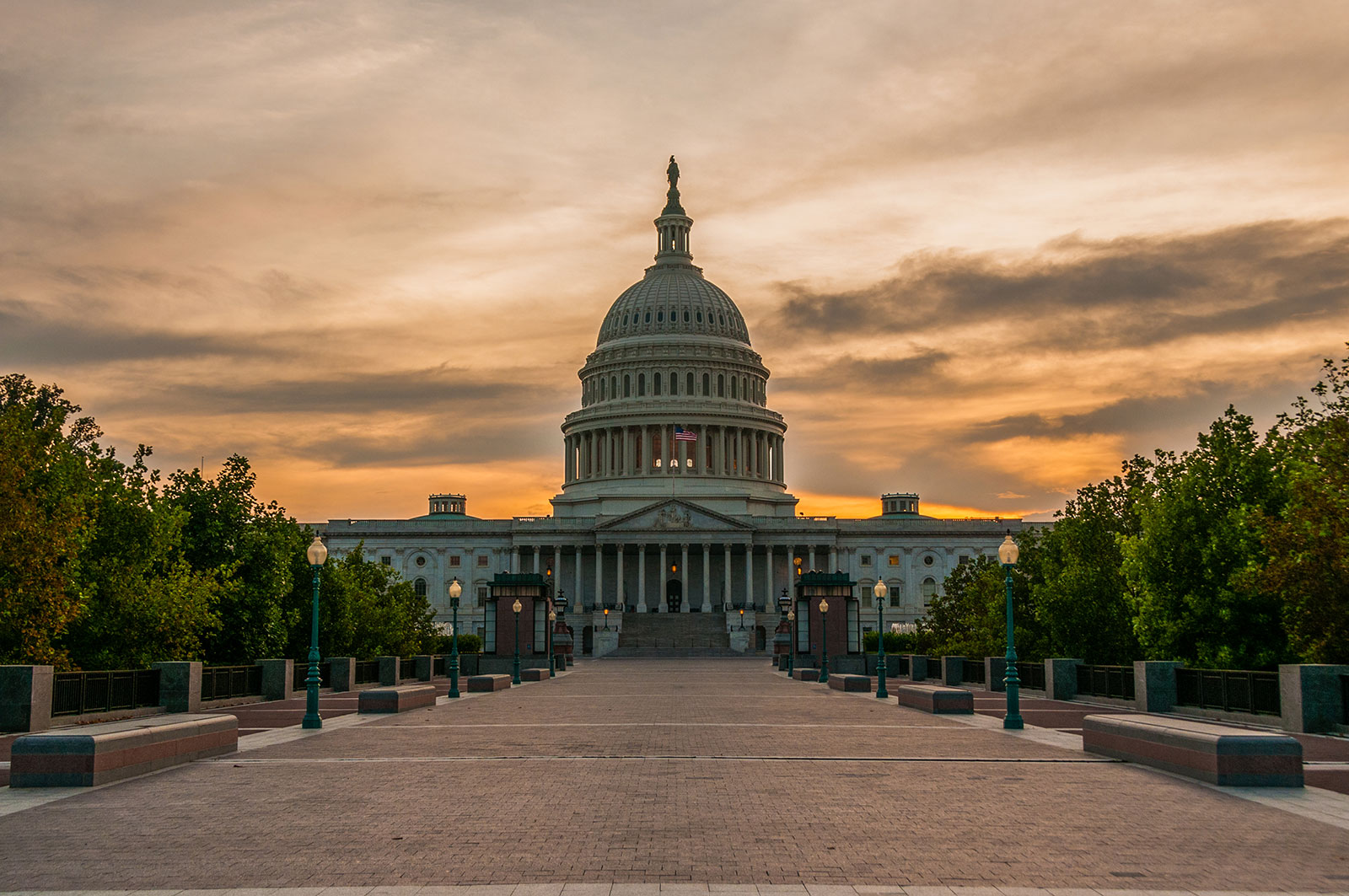Senate's Targeted COVID-19 Package Fails to Advance; Path Forward Remains Unclear
Upcoming Events
Related News

Key Takeaways
On September 8, Republicans in the U.S. Senate released a targeted COVID-19 stimulus package building on draft language circulated in mid-August. The legislation, Delivering Immediate Relief to America’s Families, Schools and Small Businesses Act, represents $500 billion in federal spending and loans, but also contains offsets in the form of rescissions of hundreds of billions in unspent funding authorized under the Coronavirus Aid, Relief and Economic Security (CARES) Act.
The Senate is scheduled to vote on Thursday, September 10, on the package, though it is not expected to receive enough bipartisan support for passage.
WHAT’S IN THE BILL FOR COUNTIES
Of note to counties, the legislation contains provisions including employer liability protections, small business support and unemployment measures, as well as funding for child care and vaccine development. The bill offers new funding for the U.S. Postal Service (USPS) but would provide no additional state and local aid or new flexibility for existing COVID-19 aid.
STATE AND LOCAL AID
Similar to the other Senate Republican proposal that circulated this summer, the legislation does not allocate additional state and local aid beyond what was already allocated under the CARES Act’s $150 billion Coronavirus Relief Fund (CRF). This lack of aid comes despite new NACo research that county governments face a $202 billion impact to our budgets through fiscal year (FY) 2021 as a result of the COVID-19 pandemic. However, in contrast to the draft proposal, this legislation would extend the end date for allowable necessary expenditures under the CRF from December 30, 2020 to September 30, 2021. Counties support additional, direct and flexible aid to state and local governments of all sizes and urge Members of Congress oppose legislation that doesn’t include additional support for our residents.
U.S. POSTAL SERVICE ASSISTANCE
The legislation would provide $10 billion in funding for the U.S. Postal Service (USPS) to ensure operations are strong going into the 2020 election. Additionally, the proposal would allow the USPS to use this funding as a grant in the case the agency’s revenues continue to decline.
This figure represents $15 billion less than a bill that was passed by the U.S. House of Representatives that would provide $25 billion to USPS as well as prohibit operation changes until after the election. The House adopted their legislation at the end of August. The $10 billion allocated under the legislation is also less than the HEROES Act, which provided financial aid and hazard pay to USPS.
NOTABLE PROVISIONS INCLUDED IN THE SKINNY PROPOSAL
- Employer Liability Protections: The latest “skinny” proposal would include the Safeguarding America’s Frontline Employees To Offer Work Opportunities Required To Kickstart The Economy (Safe To Work) Act, similar to the U.S. Senate HEALS Act which would provide liability protections for employers, including local government agencies, hospitals, health care workers, small and large businesses, schools, colleges and universities and religious, philanthropic and other nonprofit institutions to discourage lawsuits related to COVID-19.
- Pandemic Unemployment Insurance: The proposal would provide states with the option to continue providing $300 weekly in enhanced federally funded unemployment compensation benefits, consistent with the amount of extended federal aid that President Trump directed in an executive memorandum earlier in August. Most states have been approved to provide extended unemployment benefits. The pandemic unemployment benefits would last through December 27, 2020.
- Small Business Relief: The relief package would allow eligible small businesses to draw down on a second round of loans from the Paycheck Protection Program (PPP) established under the CARES Act. These small businesses must demonstrate at least a 35 percent reduction in gross revenue in a quarter in 2020 compared to the same quarter in 2019. Eligible uses would be expanded to cover certain worker protective, supplier and operational expenses. Furthermore, second PPP loans would be equal to 2.5 times the average monthly payroll costs, with a maximum loan amount of $2 million. Additionally, the proposal would simplify the forgiveness application process for current and future PPP borrowers receiving loans at $150,000 or less and provide $50 million in additional resources for audits. The bill would allocate $257.6 billion in funds (offset by repurposing $100 billion in unspent CARES Act small business funding from the first round) to the existing PPP.
- School Choice Provisions: The relief package authorizes one-time, emergency appropriations funding for states to sub-grant to scholarship-granting organizations (SGOs) for students to use toward qualified educational expenses (as determined by the state), such as private school tuition and home-schooling expenses. Additionally, the legislation would offer two years of tax credits for contributions to SGOs capped at $5 billion per year and would allow parents to utilize 529 plans for expenses associated with public, private, religious or home-school K-12 education for two years.
- Rescinds Fund Appropriated under CARES Act: To offset new spending, the package would reduce expenditures allocated under the CARES Act. Specifically, it would reduce the U.S. Treasury’s $500 billion Exchange Stabilization Fund, which was established to make loans to eligible businesses, states and municipalities, to $296 billion.
EMERGENCY APPROPRIATIONS
The draft language maintains the emergency appropriations outlined in the original proposal, with the following revisions:
- $16 billion for COVID-19 testing, a key component of counties’ COVID-19 tracking and response efforts, with the addition of new reporting requirements for fund recipients that would detail the usage funds on a quarterly basis.
- An additional $2 billion dollars (for a total of $31 billion) for the development of COVID-19 medical countermeasures and vaccines, which can also be used for telehealth access and infrastructure needs and other public health preparedness and response activities to aid counties in providing health services to remote and vulnerable populations. The proposal would also require the Department of Health and Human Services to develop a comprehensive strategy for vaccine distribution within 60 days of the bill’s enactment, which would then be used by local governments to draft their own distribution plans.
- $105 billion for elementary, secondary and post-secondary education, including $70 billion for the Elementary and Secondary School Emergency Relief Fund, one-third of which would be disbursed immediately with the remainder available only for reopening costs. These funds would provide some fiscal relief for those county governments that contribute funding to local school districts but may also limit flexibility and increase administrative burden for local county health and education officials.
- $15 billion for child care, including $5 billion through the Child Care and Development Block Grant (CCDBG) and $10 billion in a new flexible grant program, which would bolster county-administered child care programs and increase access to safe, affordable child care for county residents and county employees. To view NACo’s analysis about other legislative proposals to address the COVID-19 child care crisis, click here.
Related News

NACo sends letter to congressional leadership urging SALT deduction reform
The letter urges Congress to raise the cap on the SALT Deduction, to provide relief to American families facing double taxation and reverse an unfair double standard

NACo endorsed advanced refunding bill introduced in the U.S. House
NACo endorsed this bill and supports counties’ ability to issue tax-exempt advance refunding bonds, which can save taxpayers millions of dollars.

U.S. Congress begins work on budget reconciliation process: What this means for counties
The House and Senate Budget Committees have marked up Fiscal Year (FY) 2025 budget resolutions to initiate the budget reconciliation process to enact policy priorities without garnering bipartisan support, although the two chambers differ in their approach to drafting the legislation.
Featured Initiative
American Rescue Plan Resource Hub

